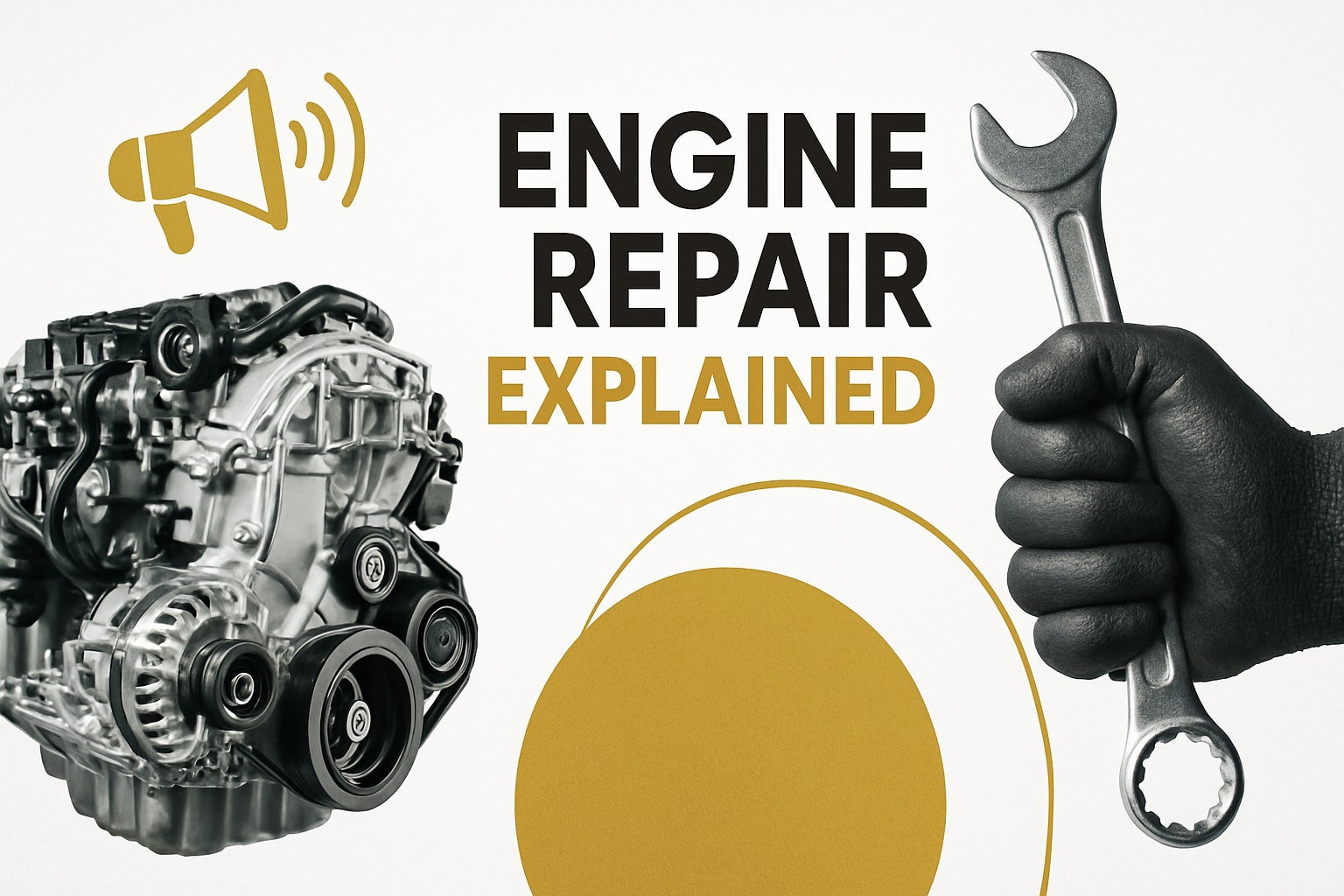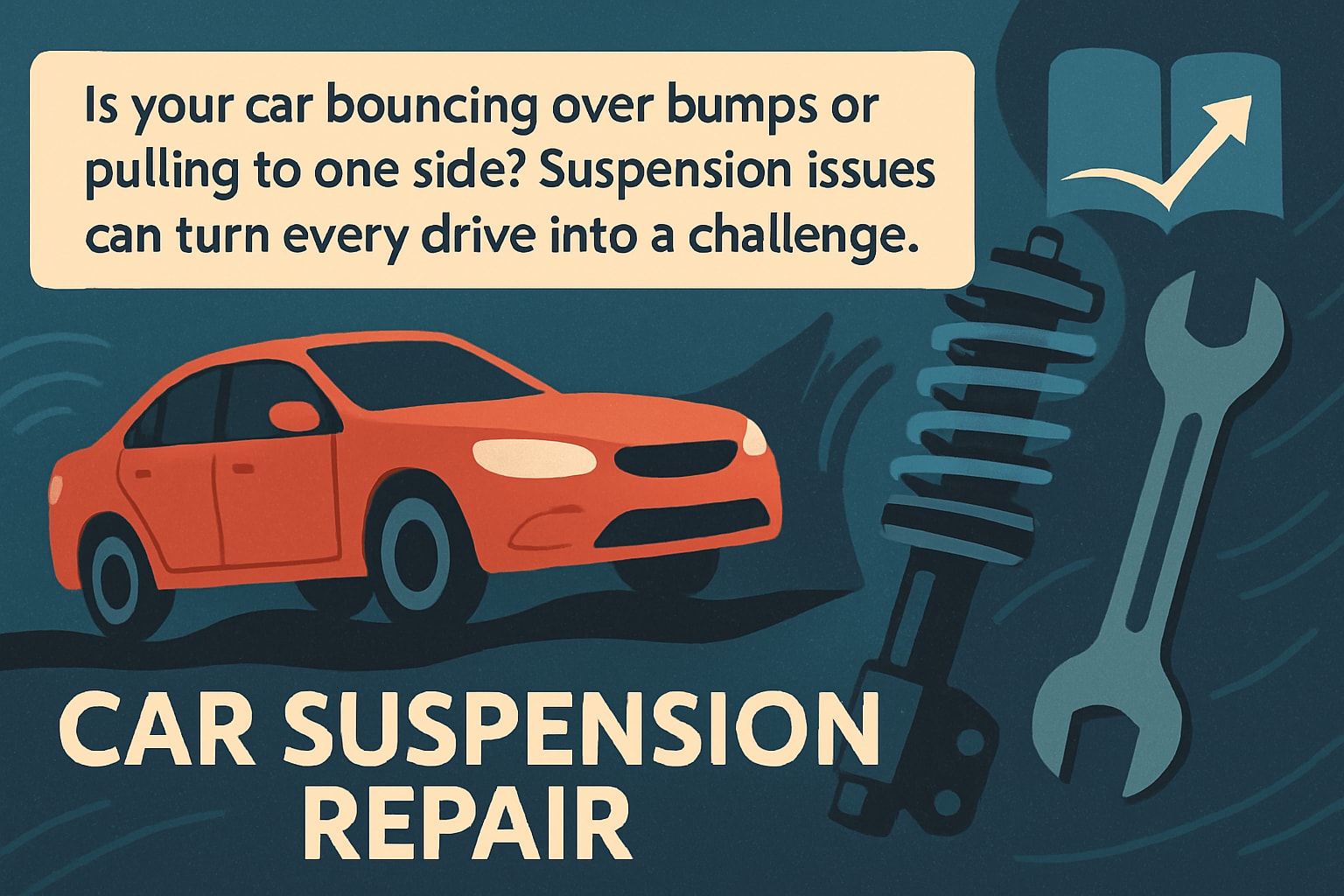Is your engine making strange noises or running rough? In 2025, keeping up with engine repair is vital as vehicle technology evolves rapidly.
This guide demystifies engine repair for car owners and enthusiasts, delivering the latest knowledge, step-by-step instructions, and expert advice.
You will discover how today’s engines function, common problems to watch for, and the exact repair process. We also examine new technologies and proven maintenance strategies.
Ready to confidently handle engine issues? Let’s get started.
The Modern Engine: Anatomy and Function
Modern vehicles are powered by complex internal combustion engines, which remain the heart of most cars in 2025. Understanding the anatomy of an engine is critical for anyone interested in engine repair. The major components include the engine block, pistons, crankshaft, camshaft, valves, and cylinder head. Each plays a vital role in converting fuel into motion, making a basic grasp of these parts essential for diagnosing and addressing issues.
Today’s engines look very different from those built a decade ago. Innovations like direct fuel injection, turbocharging, and hybrid integration have transformed how engines operate. Direct injection improves efficiency by delivering fuel precisely, while turbochargers boost power by forcing extra air into the engine. Hybrid systems pair traditional engines with electric motors, resulting in new challenges and opportunities for engine repair.
A defining feature of 2025 engines is the widespread use of electronic control units (ECUs) and sophisticated sensors. ECUs monitor and adjust engine functions in real time, optimizing performance and emissions. These systems rely on dozens of sensors, from oxygen sensors to knock detectors, to keep everything running smoothly. For precise engine repair, technicians must understand how to interpret the data from these advanced electronics.
Different engine layouts offer unique strengths. The most common configurations include inline, V-type, and boxer engines. Here’s a quick comparison:
Engine Layout
Description
Advantages
Disadvantages
Inline
Cylinders in a row
Smooth, compact
Limited for large engines
V-type
Cylinders in a V
Powerful, balanced
More complex, wider
Boxer
Flat, opposed pairs
Low center of gravity
Wider, costlier to build
For example, a 2025 BMW twin-turbo inline-six engine offers a blend of smoothness and power, thanks to advanced turbocharging and direct injection. In contrast, a classic V8 engine provides raw power but lacks the efficiency and electronic sophistication of modern designs. Over 85% of new vehicles in 2025 use advanced engine management systems, increasing both the complexity and the need for up-to-date engine repair services.
As engines become more intricate, there are more potential failure points, but also significant gains in performance and efficiency. Mastering the fundamentals of engine construction and operation remains the foundation of effective engine repair in this era of rapid technological change.
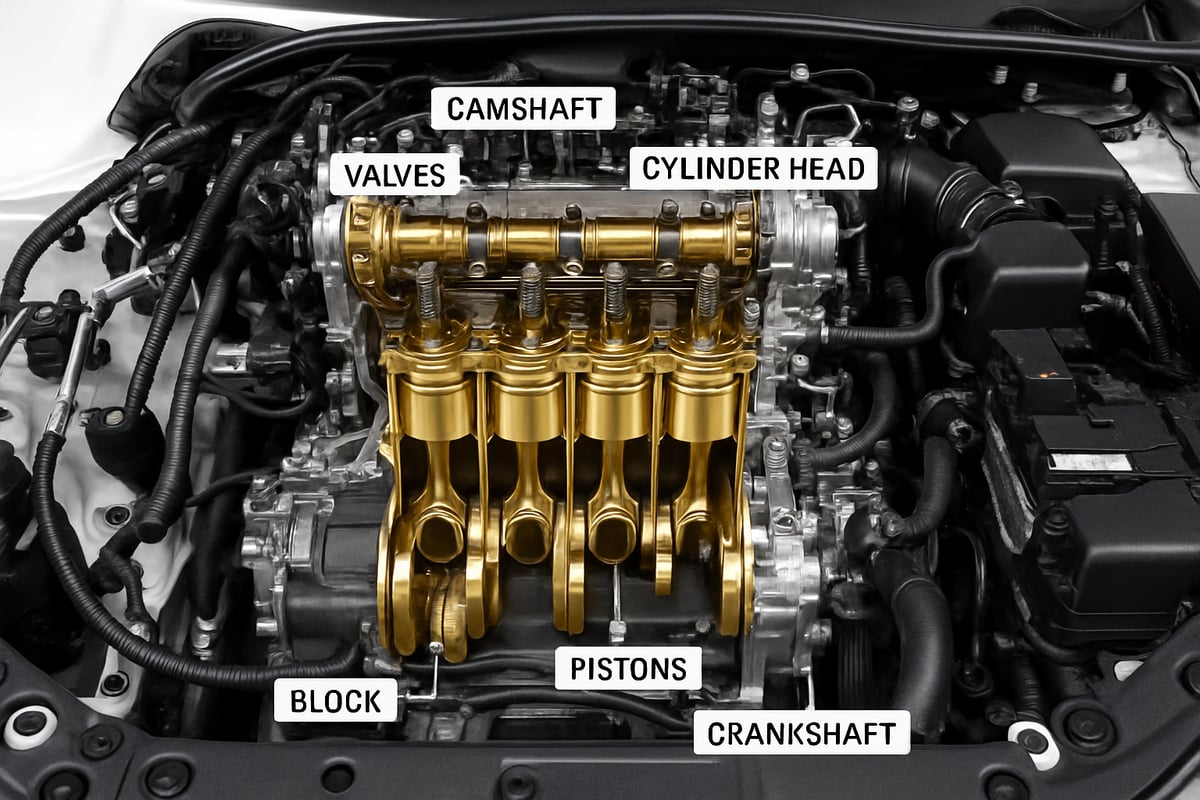
Diagnosing Engine Problems: Tools and Techniques
In 2025, diagnosing engine problems requires a blend of experience, technology, and systematic thinking. With modern vehicles more complex than ever, effective engine repair starts with a precise diagnosis. Mastering these tools and techniques can save you time, money, and frustration.
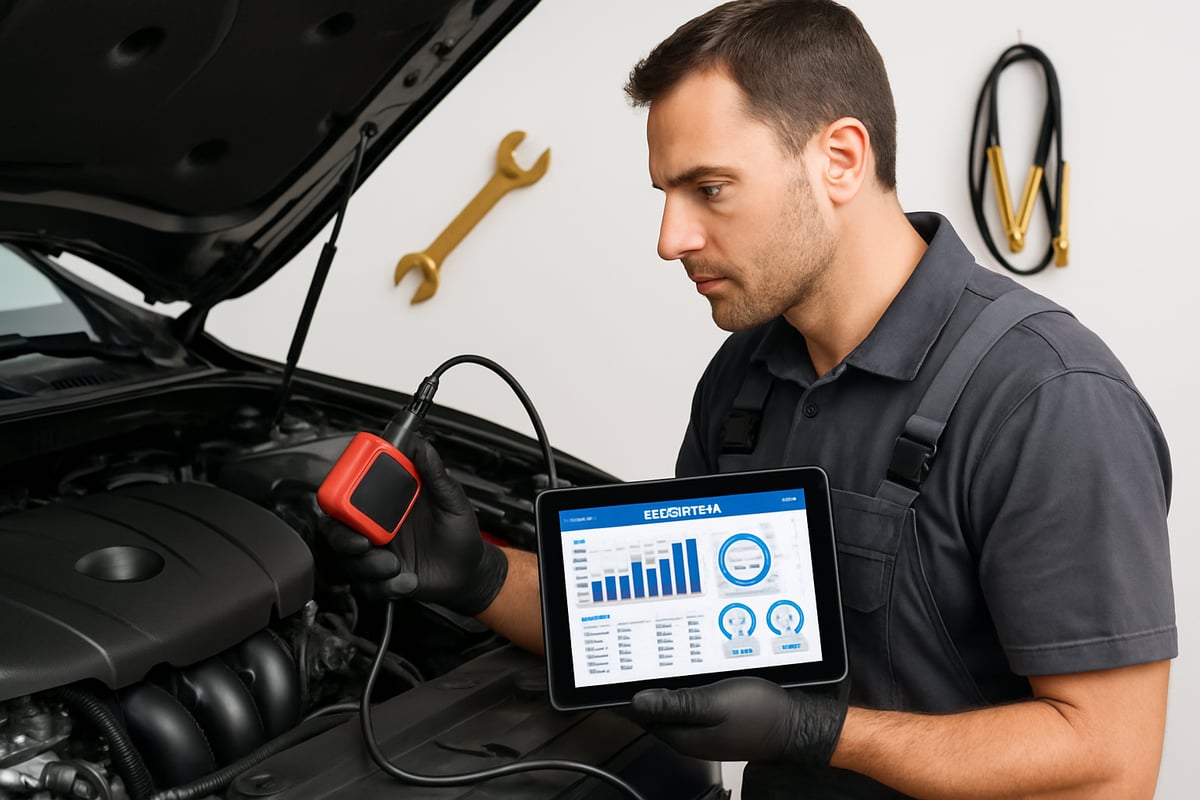
Initial Symptom Identification
Every engine repair begins with identifying symptoms. Listen for strange noises, such as knocking, ticking, or whining. Watch for dashboard warning lights, especially the check engine indicator. Notice performance changes, like rough idling, reduced power, or stalling.
Create a checklist with these questions:
- Is there visible smoke from the exhaust?
- Are there fluid leaks under the vehicle?
- Do you feel unusual vibrations or hesitations during acceleration?
Careful observation at this stage helps narrow down potential issues. Recording symptoms and when they occur provides valuable clues for later diagnostic steps. Early symptom identification sets the stage for efficient engine repair.
Diagnostic Tools: OBD-II and Beyond
Modern engine repair relies on advanced diagnostic tools. The OBD-II scanner is essential for reading fault codes and monitoring engine data. In 2025, many vehicles require more specialized equipment, such as manufacturer-specific scan tools and wireless diagnostic interfaces.
Professional technicians often use digital multimeters, oscilloscopes, and even borescopes to inspect internal components without full disassembly. For complex issues, advanced diagnostic services—like those described in Advanced Car Diagnostic Services—provide dealership-level analysis and troubleshooting for luxury and European vehicles.
Whether you are a DIYer or seeking professional help, investing in the right diagnostic tools is crucial for successful engine repair.
Reading Live Data and Error Codes
Once you connect an OBD-II scanner, read and record any error codes. These codes point to specific systems or components but do not always reveal the exact fault. Reading live data, such as fuel trims, sensor voltages, and temperature readings, is key to interpreting what the engine is experiencing in real time.
Compare live data values to manufacturer specifications. Look for patterns: Does a sensor reading stay out of range? Are fuel trims excessively positive or negative? Use a table to organize error codes and corresponding data:
Error Code
System
Live Data Anomaly
P0302
Ignition
Misfire on Cylinder 2
P0171
Fuel System
Lean condition detected
Accurate interpretation of codes and data prevents unnecessary engine repair and helps you focus on the real problem.
Visual Inspection Techniques
Not all engine repair diagnostics are digital. A thorough visual inspection remains essential. Look for signs of leaks, such as oil around gaskets or coolant under the vehicle. Examine hoses and belts for cracks, swelling, or fraying.
Check for unusual smoke from the exhaust:
- Blue smoke may indicate oil burning.
- White smoke could mean coolant in the combustion chamber.
- Black smoke often points to excess fuel.
Feel for vibrations while the engine is running. Use a flashlight and mirror to inspect hard-to-see areas. Document any findings to support your diagnostic conclusions and guide the next steps in engine repair.
Case Example: Diagnosing a Mercedes-Benz Misfire
Consider a 2025 Mercedes-Benz exhibiting a rough idle and the check engine light. Using a scan tool, you retrieve a P0304 code, indicating a misfire on cylinder 4. Live data reveals inconsistent spark voltage and fuel injector pulse width for that cylinder.
A visual check finds no external damage. Swapping the ignition coil with another cylinder moves the misfire, confirming the coil as the culprit. This methodical approach demonstrates how combining tools, data, and inspection leads to efficient engine repair.
DIY vs. Professional Diagnosis
Modern vehicles present challenges for DIY enthusiasts. While basic OBD-II tools are accessible, advanced diagnostics often require specialized equipment and expertise. Studies reveal that over 60% of engine repairs begin with electronic diagnostics, reflecting the growing complexity of automotive systems.
If you encounter persistent issues, or if error codes reference complex modules or software faults, consider seeking professional help. Certified technicians have access to proprietary tools and technical resources, ensuring accurate diagnosis and effective engine repair.
In summary, mastering both traditional and advanced diagnostic techniques is essential for anyone tackling engine repair in 2025. Whether you diagnose issues yourself or rely on experts, understanding these tools and methods empowers you to keep your vehicle running at its best.
Engine Repair Process: Step-by-Step Guide
A successful engine repair demands precision, patience, and a systematic approach. Whether you are a DIY enthusiast or a seasoned technician, following a clear, step-by-step process is essential to avoid costly mistakes and ensure your engine runs smoothly.
Meticulous attention to detail at every stage of engine repair can be the difference between a reliable vehicle and one plagued by repeat failures. Let us walk through the essential steps, using industry best practices and real-world insights.
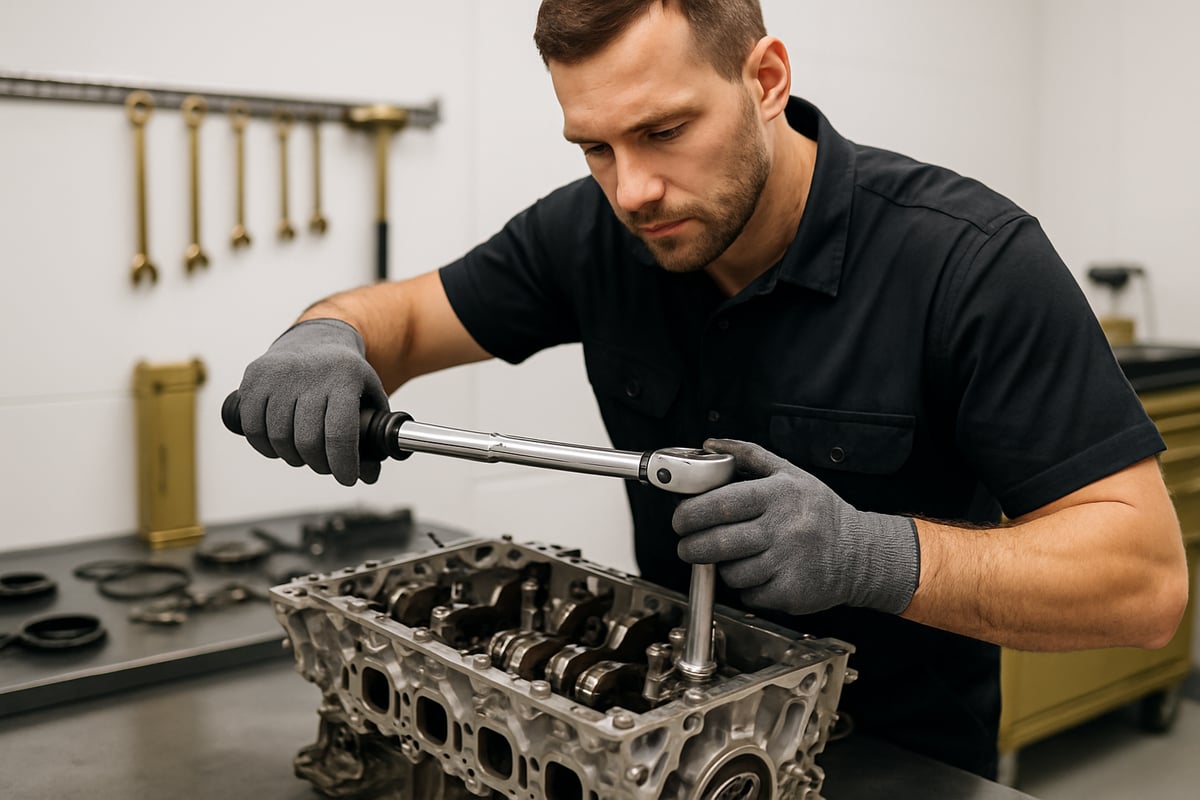
Step 1: Safety Precautions and Preparation
Before beginning any engine repair, prioritize safety. Disconnect the negative battery cable to prevent accidental shorts or electrical hazards. Always secure the vehicle on flat ground using wheel chocks and jack stands.
Wear gloves and safety glasses to protect yourself from sharp edges and fluids. Clean the workspace thoroughly, ensuring you have ample light and ventilation. Proper preparation reduces the risk of accidents and helps maintain focus during the engine repair process.
Step 2: Gathering Required Tools and Parts
Organize all necessary tools and components before starting the engine repair. Essential items include socket sets, torque wrenches, digital multimeters, OBD-II scanners, and specialty tools for timing components.
Decide between OEM and aftermarket parts, considering manufacturer recommendations. Having everything at hand prevents interruptions and ensures the engine repair proceeds efficiently.
Step 3: Disassembly – Removing Covers, Belts, and Ancillary Components
Begin disassembly by removing engine covers, belts, hoses, and accessories that obstruct access to internal components. Label and organize bolts, brackets, and connectors to avoid confusion during reassembly.
Take photos or notes as you go. This documentation is invaluable for complex engine repair tasks, especially when multiple systems are involved.
Step 4: Inspecting Engine Internals: Pistons, Valves, Gaskets, Cylinder Walls
With access to the engine internals, inspect key areas for wear or damage. Check pistons for scoring, valves for burning or pitting, and gaskets for leaks.
Use a borescope to examine cylinder walls for scratches or deposits without full disassembly. Detailed inspection is the cornerstone of effective engine repair.
Step 5: Identifying Worn or Damaged Parts
Carefully measure tolerances using feeler gauges and micrometers. Identify any components that fall outside manufacturer specifications. Common culprits include warped cylinder heads, worn timing chains, or cracked gaskets.
A table can help summarize typical issues and corrective actions:
Component
Common Issue
Solution
Timing Chain
Excessive Slack
Replace Chain
Cylinder Head
Warping/Cracks
Machine or Replace
Head Gasket
Leaks/Burns
Replace
Accurate identification ensures the engine repair addresses the root cause, not just the symptoms.
Step 6: Cleaning and Preparing Surfaces for Reassembly
Thoroughly clean all mating surfaces using approved solvents and lint-free cloths. Remove old gasket material and debris to prevent future leaks.
Check for corrosion or damage on sealing areas. Proper cleaning is vital for a reliable engine repair, as contamination can compromise new gaskets and seals.
Step 7: Replacing or Repairing Faulty Components
Install new or refurbished parts as required. For critical steps like head gasket replacement, follow manufacturer torque sequences and specifications.
For example, when replacing a head gasket on a 2025 Audi A6, tighten bolts in the recommended order. A sample torque sequence might look like:
1-6-8-3-5-2-4-7 (tighten in stages: 30 Nm, 60 Nm, then 90° turn)
This precision ensures the integrity of your engine repair and prevents warping or leaks.
Step 8: Reassembly – Torque Specifications, Gasket Placement, Timing Alignment
Reassemble components in reverse order, using new gaskets and seals. Adhere strictly to torque specifications for critical fasteners.
Align timing marks carefully when reinstalling timing chains or belts. Misalignment here can lead to catastrophic engine damage, negating the benefits of your engine repair.
Step 9: Fluids and Final Checks
Refill the engine with fresh oil and coolant, using manufacturer-approved fluids. Bleed air from the cooling system and check for leaks.
Inspect all connections and fasteners. This step is crucial to verify that your engine repair has been completed correctly and that no issues remain.
Step 10: Initial Startup and Post-Repair Diagnostics
Start the engine and monitor for unusual noises, warning lights, or leaks. Use an OBD-II scanner to check for error codes and verify live sensor data.
A real-world example can be found in this Engine Repair Diagnostics Case Study, which illustrates how thorough diagnostics after repair can confirm the success of your work.
Record baseline readings for future reference. Successful engine repair is confirmed when the engine operates smoothly and all systems report normal.
Example: Step-by-Step Head Gasket Replacement on a 2025 Audi A6
- Disconnect battery and drain fluids.
- Remove intake, exhaust, and necessary ancillaries.
- Unbolt cylinder head and inspect for damage.
- Clean surfaces, install new gasket, and torque head bolts in sequence.
- Reassemble, refill fluids, and perform diagnostic checks.
This approach demonstrates the importance of a methodical engine repair process, minimizing the risk of missed steps.
The Argument for a Systematic Process
Industry surveys indicate that improper reassembly is a leading cause of repeat engine failures. Following a detailed checklist for each engine repair step reduces errors and increases reliability.
Mistake
Consequence
Prevention
Missed Torque Spec
Leaks, Warping
Use Torque Wrench
Forgotten Gasket
Oil/Coolant Leak
Double-Check Checklist
Timing Misalignment
Engine Damage
Align Marks Carefully
Thoroughness is non-negotiable when performing engine repair.
Conclusion
A structured, step-by-step approach is essential for effective engine repair, regardless of vehicle make or model. By following industry best practices and using the right tools, you can ensure long-term engine reliability.
Remember, attention to detail and systematic execution are the hallmarks of successful engine repair.
Emerging Trends and Challenges in Engine Repair
The landscape of engine repair is rapidly transforming in 2025. As modern vehicles evolve, new technologies are introducing both groundbreaking advancements and unique challenges. For technicians and car owners alike, staying updated with these trends is critical to maintaining peak engine performance.

One of the most significant shifts is the rise of hybrid and electric-assist engines. These powertrains combine traditional combustion systems with electric motors and advanced battery packs. As a result, engine repair now demands expertise in both mechanical and electrical systems. According to Auto Repair Industry Market Data 2025, the growth of electric vehicle repair services is reshaping the industry, with more technicians required to handle high-voltage systems and complex integrations.
In addition to hybridization, manufacturers are increasingly using lightweight aluminum and composite materials in engine construction. These materials improve efficiency and fuel economy, but they also present unique repair challenges. For instance, aluminum blocks require specialized tools and techniques to avoid damage during engine repair. Meanwhile, the impact of software and firmware updates on engine performance cannot be overstated. Modern engines rely on intricate software controls for timing, fuel delivery, and emissions, making digital literacy essential for effective repairs. Industry sources like Automotive Repair Industry Statistics 2025 highlight how technology is driving both eco-friendly practices and more complex service demands.
A clear example of these trends can be seen in the management of software-related misfires in late-model Mercedes-Benz engines. What once might have been resolved by swapping out a spark plug now often requires updating engine control modules or recalibrating sensors. As engines become more reliant on electronic systems, the line between mechanical and digital engine repair continues to blur. In fact, forecasts indicate that 40% of all engine repairs in 2025 will involve some form of software intervention, underscoring the necessity for ongoing technical training.
To keep pace, technicians must continually update their skills through certification programs and hands-on experience with the latest diagnostic tools. Proficiency in using OBD-II scanners, digital multimeters, and manufacturer-specific software is now just as important as mechanical know-how. For car owners, the choice between DIY repairs and relying on specialized professionals becomes more critical as engine technology advances. Those who invest in professional engine repair services benefit from up-to-date expertise and access to dealership-level equipment, ensuring that even the most complex issues are identified and resolved correctly.
The future of engine repair is defined by adaptation and learning. With electrification, innovative materials, and software-driven systems on the rise, successful repairs hinge on knowledge, flexibility, and a commitment to continuous improvement. Staying ahead in this field means embracing both the opportunities and challenges that modern engines present.
Preventive Maintenance and Engine Longevity
Preventive maintenance is the foundation of reliable engine repair and long-term vehicle health. Modern engines are more advanced, but they also require careful, routine care. Ignoring maintenance schedules can lead to costly breakdowns and reduce your car’s lifespan. How can you make sure your engine stays strong for years to come?
The Importance of Regular Oil Changes and Fluids
Oil is the lifeblood of your engine. Regular oil changes, using manufacturer-recommended fluids, are critical for minimizing friction and preventing premature wear. In 2025, synthetic oils and specialized lubricants are common, offering better protection for high-tech engines. Skipping oil changes can quickly lead to sludge buildup and the need for engine repair. Always check your owner’s manual for the correct oil type and change intervals. Consistent fluid maintenance helps keep everything running efficiently.
Filter and Coolant Maintenance
Filters play a vital role in engine performance. Air, oil, and fuel filters should be replaced at the intervals specified by your vehicle’s manufacturer. Dirty filters can starve your engine of clean air or fuel, increasing strain and risking expensive engine repair. Coolant is equally important, as it regulates temperature and prevents overheating. Regularly inspect coolant levels and replace coolant as needed to avoid corrosion and internal damage. Neglecting these basics can shorten your engine’s life dramatically.
Real-World Maintenance Success
Consider the case of a Range Rover that surpassed 200,000 miles thanks to strict adherence to maintenance schedules. This result is not unusual—industry data confirms that vehicles with consistent preventive care experience 50% fewer major engine repair incidents. According to Car Repair Statistics 2025, drivers who follow recommended maintenance schedules not only avoid expensive fixes but also benefit from greater reliability and resale value. The evidence is clear: routine care pays off.
Preventive Care in the Connected Era
In 2025, connected car technology is transforming how owners approach engine repair and maintenance. Many vehicles now monitor fluid levels, filter condition, and upcoming service needs automatically. These smart alerts help you stay ahead of potential issues, reducing the risk of engine damage. Embracing preventive maintenance is still the most cost-effective way to avoid major failures, even as automotive technology evolves. Make it a habit, and your engine will reward you with lasting performance.
As you’ve seen throughout this guide, tackling engine issues in 2025 means understanding everything from advanced diagnostics to the latest engine technologies. If you want the peace of mind that comes from having dealership-level expertise at your doorstep—whether your vehicle is a Mercedes, BMW, or any other luxury brand—Revera Mobile Mechanic is ready to help. We bring years of specialized experience in complex electrical and mechanical repairs right to you, saving you time and hassle. When you’re ready for expert service that goes the extra mile, Book service!


